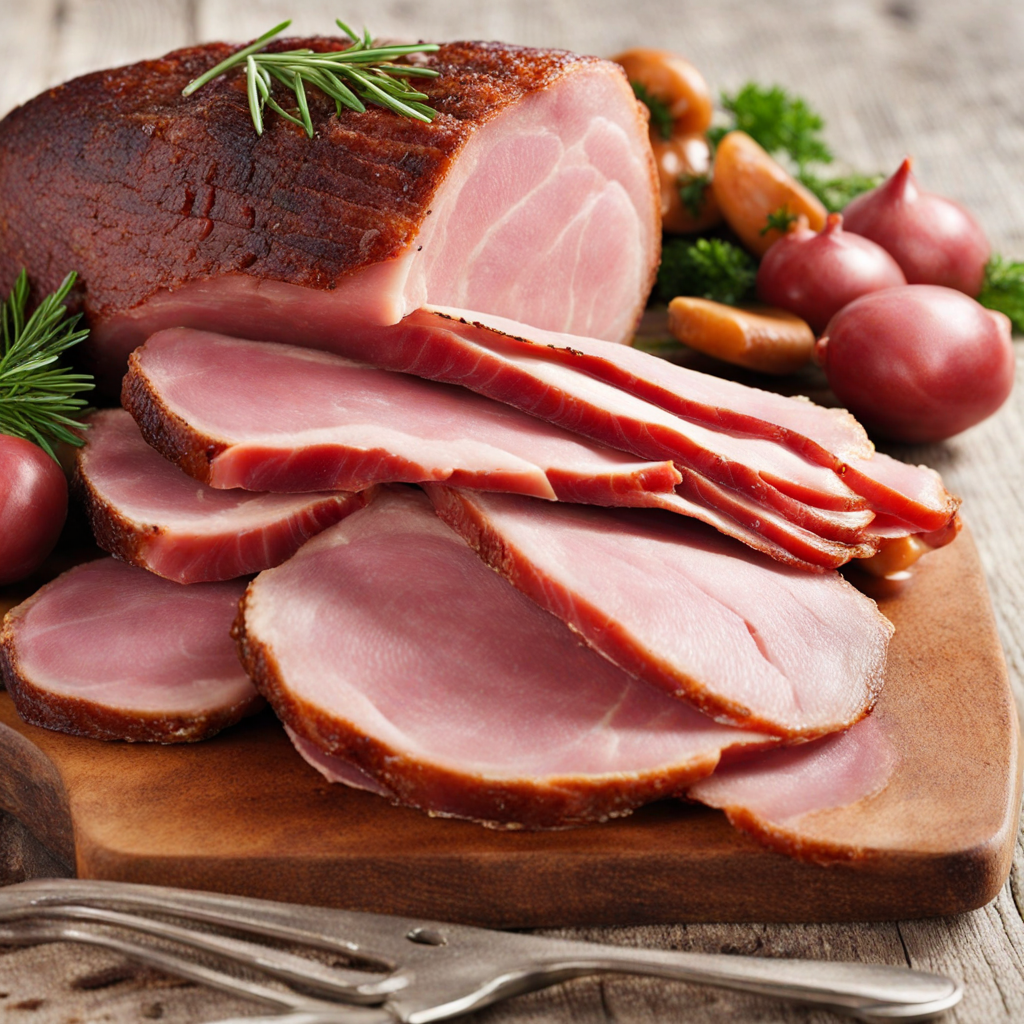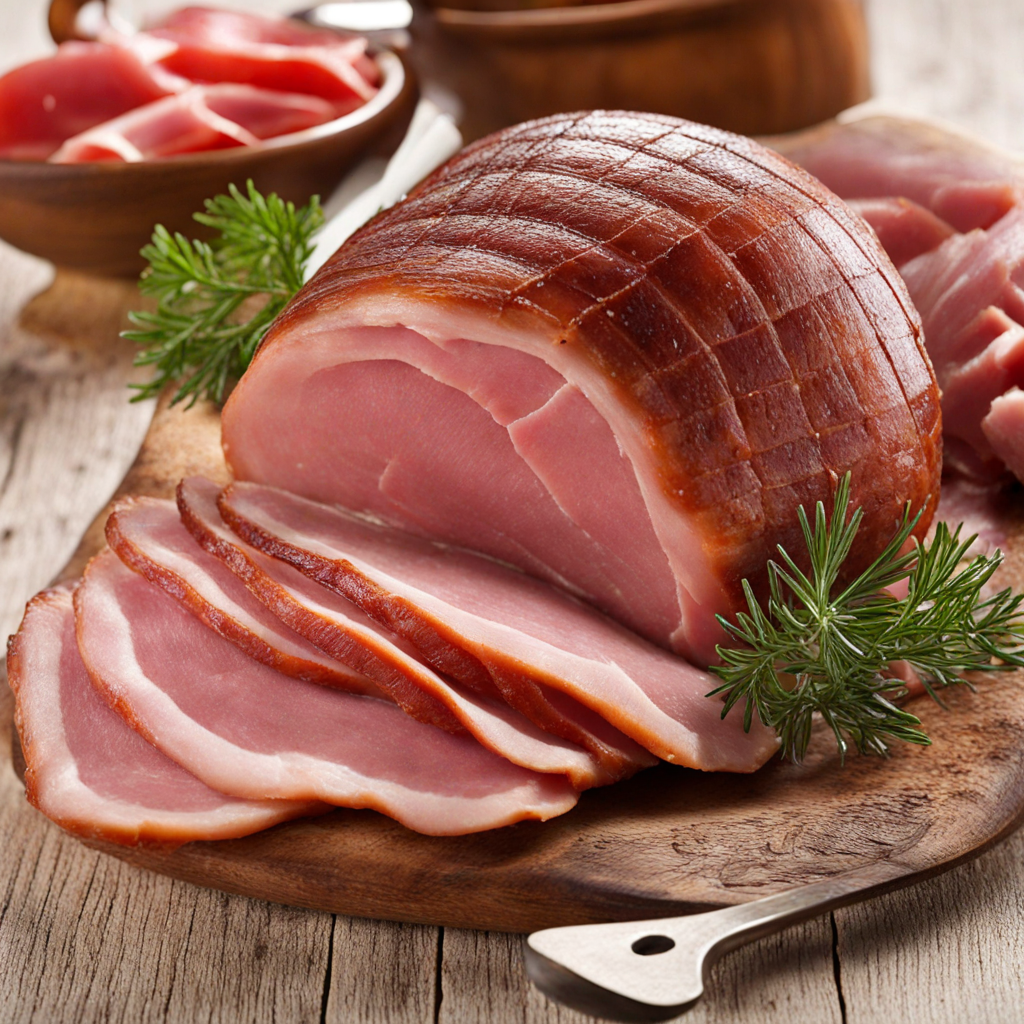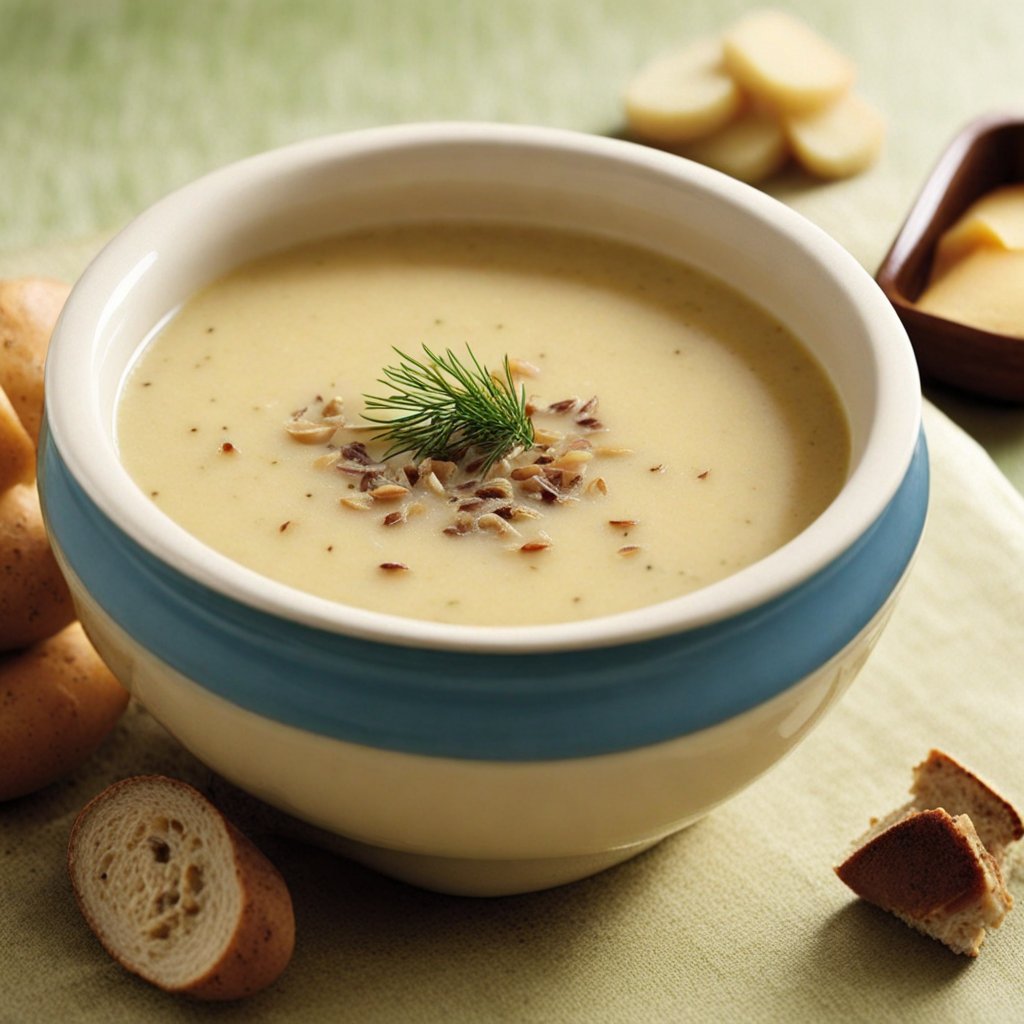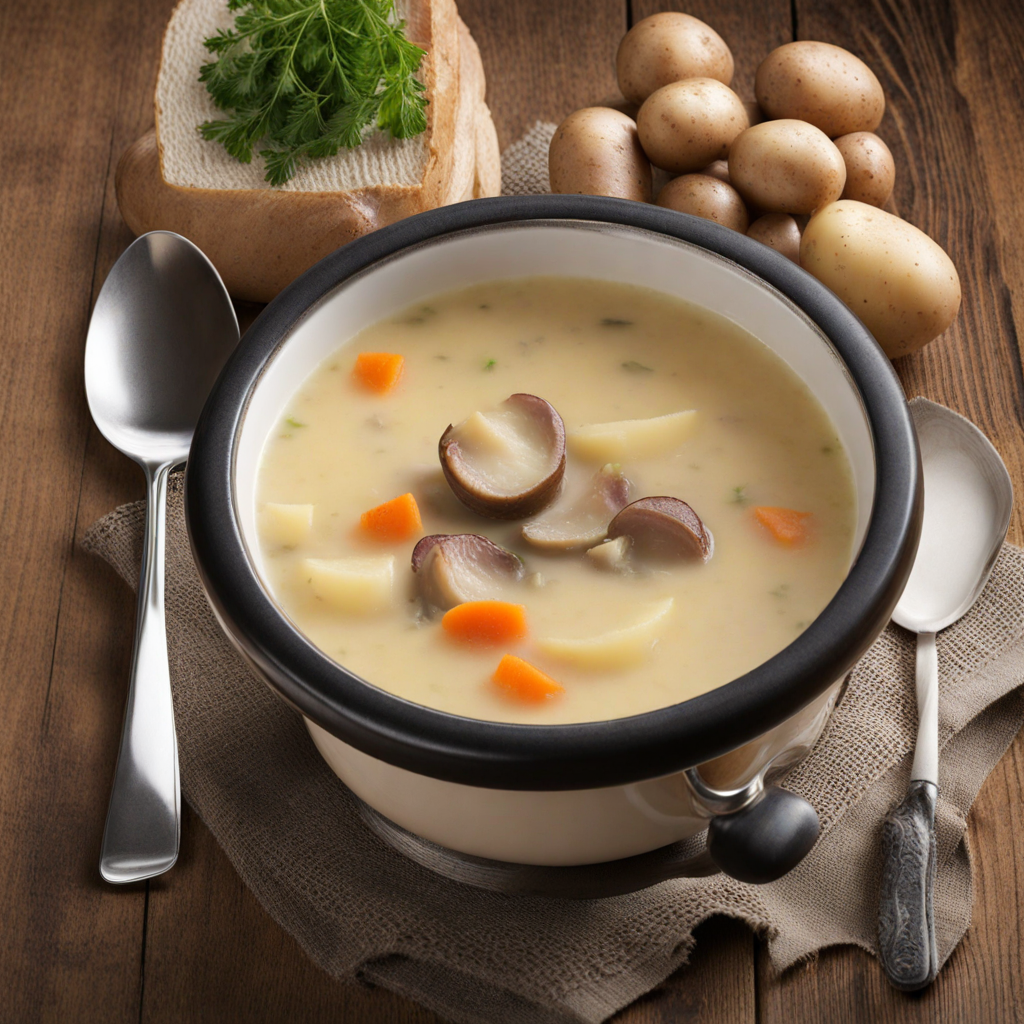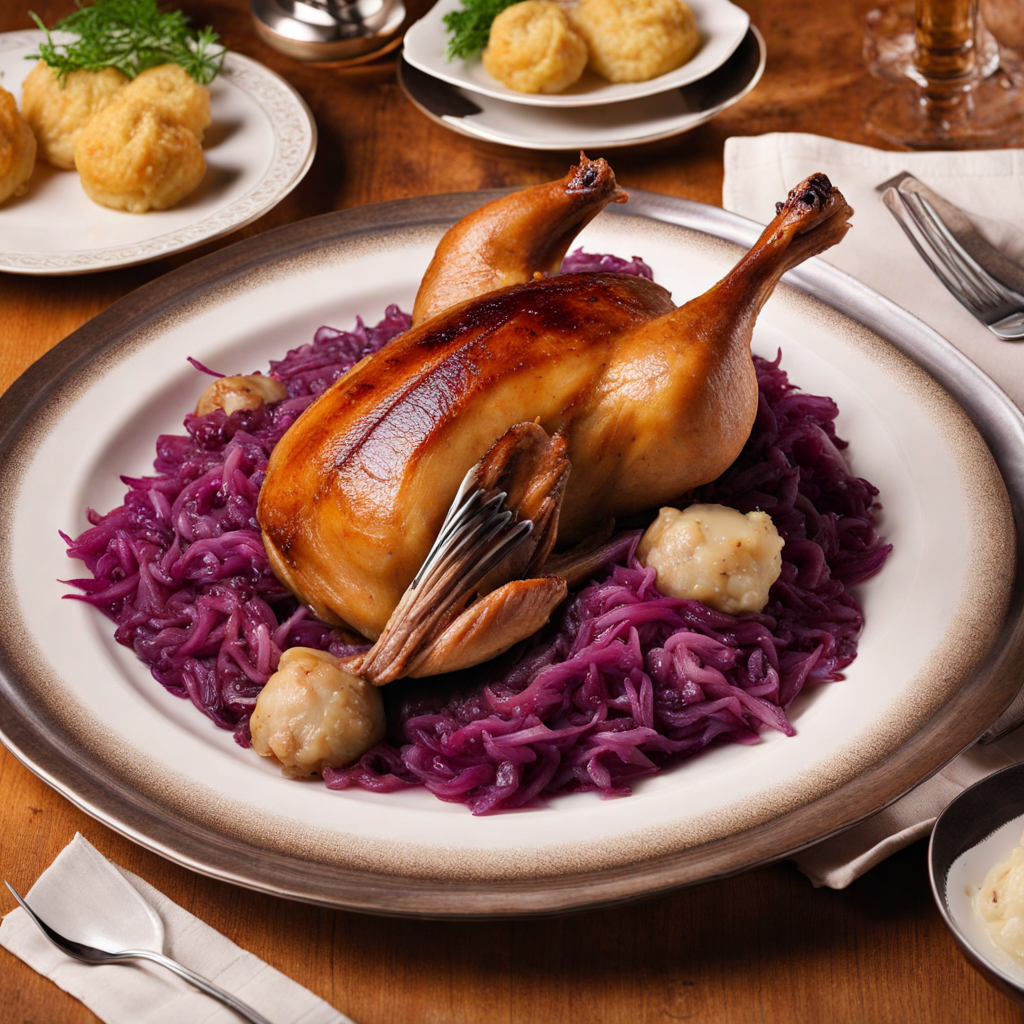Prague Ham
Prague Ham, or "Pražská šunka," is a traditional Czech delicacy that embodies the rich culinary heritage of the Czech Republic. This dry-cured ham is notably recognized for its delicate flavor and tender texture, which can be attributed to the meticulous curing process that involves a blend of salt, spices, and a hint of smoke. The ham is typically made from the hind leg of a pig, which is carefully aged to develop its distinctive taste. When sliced, it reveals a beautiful marbling of fat that enhances its succulence, making it a true delight for the palate. One of the hallmarks of Prague Ham is its slightly sweet and smoky flavor profile, which sets it apart from other cured meats. The use of traditional Czech spices, such as garlic, pepper, and juniper berries, infuses the ham with a unique taste, while the slow curing process allows these flavors to meld beautifully. Served thinly sliced, it can be enjoyed on its own, or as part of a charcuterie board, where it pairs wonderfully with pickles, mustard, and fresh bread. It is not uncommon to find it featured in classic Czech dishes, adding depth and richness to soups, salads, and sandwiches. Beyond its delightful flavor, Prague Ham also has a cultural significance in the Czech Republic. It is often enjoyed during festive occasions, family gatherings, and is a staple in traditional Czech cuisine. The ham is celebrated not just for its taste, but also for the craftsmanship that goes into its production, which has been passed down through generations. For those looking to explore the culinary landscape of the Czech Republic, indulging in Prague Ham is an essential experience that offers a taste of the country’s history and vibrant food culture.
How It Became This Dish
The History of Pražská Šunka: A Culinary Symbol of Czech Heritage Origins and Early History Pražská šunka, or Prague ham, is a product steeped in history and tradition, embodying the culinary artistry of the Czech Republic. Its origins can be traced back to the medieval period, with the earliest records of ham production in the region dating back to the 15th century. The Czech lands, particularly Bohemia, were part of a vibrant trade network in Central Europe, where spices and curing techniques from various cultures converged. This melting pot of influences laid the groundwork for the development of charcuterie, including the beloved Pražská šunka. The initial methods of preserving meat involved salting and smoking, techniques that were essential for extending the shelf life of food before the advent of refrigeration. The prosperous trade routes running through Prague contributed to the refinement of these techniques, enabling local craftsmen to experiment with various spices and curing methods. By the late 19th century, the production of Pražská šunka had gained prominence, with a distinctive flavor and texture that set it apart from other hams in Europe. Cultural Significance Pražská šunka is not just a food item; it is a cultural icon that reflects the culinary heritage of the Czech Republic. It holds a special place in Czech traditions and celebrations, often being featured in festive meals and gatherings. The ham's rich flavor and tender texture make it a popular staple during holidays, including Christmas and Easter, where it is often served alongside traditional Czech dishes like potato salad. In Prague, Pražská šunka has become synonymous with the city itself. Street vendors and restaurants proudly offer this delicacy to locals and tourists alike, enhancing its status as a must-try culinary experience. The ham is often served in thin slices, either on its own or as part of a platter with pickles, bread, and mustard. This simple yet satisfying presentation allows the quality and flavor of the ham to shine through, emphasizing the importance of craftsmanship in its production. Development Over Time As the industrial revolution swept through Europe in the 19th century, the production of Pražská šunka underwent significant changes. The rise of mechanization and the establishment of large-scale meat processing facilities allowed for greater efficiency and consistency in production. However, this shift also sparked concerns about the loss of traditional methods and the authenticity of the product. In response to these challenges, many artisanal producers in the Czech Republic began to emphasize the importance of traditional curing techniques and high-quality ingredients. The establishment of quality standards became paramount in the early 20th century. In 2005, Pražská šunka was granted the Protected Geographical Indication (PGI) status by the European Union, which recognized its unique characteristics tied to the Prague region. This designation not only helped safeguard the traditional production methods but also celebrated the cultural heritage associated with the ham. Producers are required to adhere to stringent guidelines regarding the source of the meat, the curing process, and the spices used, ensuring that only authentic Pražská šunka is produced. The PGI status has also contributed to the rising popularity of Pražská šunka on the international stage. As global interest in artisanal and regional foods has grown, Czech producers have seized the opportunity to promote their culinary heritage. Food festivals and international trade shows have allowed them to showcase Pražská šunka, educating consumers about its history and traditional methods of production. This renewed interest has not only bolstered the local economy but has also instilled a sense of pride among Czechs, who view Pražská šunka as a symbol of their identity. Modern Innovations and Sustainability In recent years, the culinary landscape in the Czech Republic has continued to evolve, with a growing emphasis on sustainability and organic farming. Many producers of Pražská šunka have embraced these principles, sourcing their pork from local farms that prioritize animal welfare and environmentally friendly practices. This shift not only enhances the quality of the meat but also aligns with the values of contemporary consumers who are increasingly conscious of food origins and production methods. Innovative chefs and food artisans are also experimenting with Pražská šunka, incorporating it into modern dishes that reflect contemporary tastes. From gourmet sandwiches to fusion cuisine, the ham's versatility has allowed it to transcend traditional boundaries, appealing to a broader audience. This culinary creativity has helped reinvigorate interest in Pražská šunka, ensuring its relevance in modern dining experiences. Conclusion: A Culinary Legacy Pražská šunka is more than just a delicious ham; it is a testament to the rich culinary traditions of the Czech Republic. From its humble beginnings in medieval times to its status as a protected geographical indication, the ham has woven itself into the cultural fabric of the nation. Its significance extends beyond the dining table, serving as a symbol of pride and identity for Czechs both at home and abroad. As the world becomes increasingly interconnected, the story of Pražská šunka continues to evolve. With a renewed focus on sustainability, traditional craftsmanship, and culinary innovation, this iconic dish is poised to delight future generations. Whether enjoyed in a traditional setting or reimagined in modern cuisine, Pražská šunka will undoubtedly remain a cherished part of Czech heritage, celebrating the flavors and stories that have shaped it over the centuries.
You may like
Discover local flavors from Czech Republic


